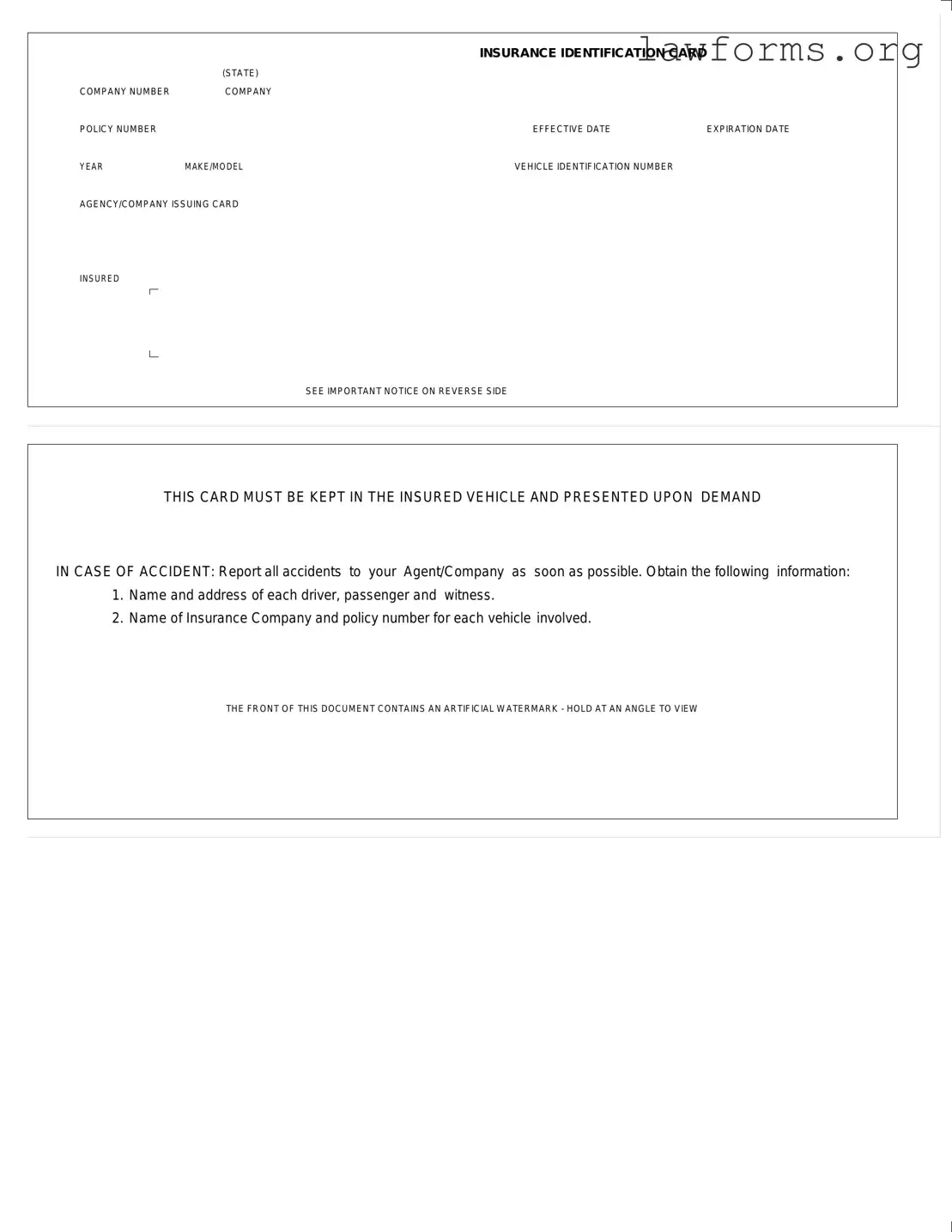Fill Out a Valid Auto Insurance Card Template
The Auto Insurance Card is an essential document that provides proof of insurance coverage for your vehicle. It contains vital information, such as the policy number, effective dates, and vehicle details, which must be readily available in the event of an accident. Ensure you keep this card in your vehicle and be prepared to present it upon demand.
To fill out the form, click the button below.
Customize Document Online

